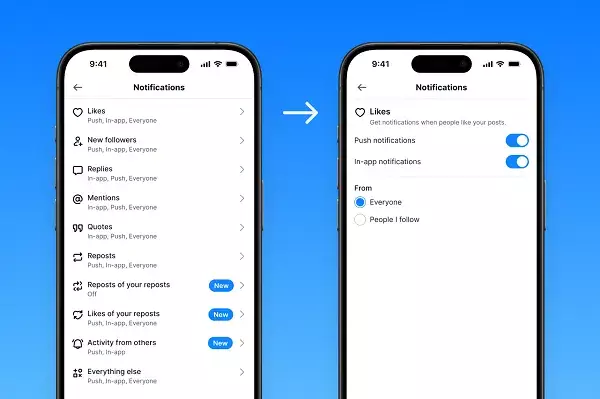Bluesky presents itself as a bold contender in the social media landscape, championing decentralization and user autonomy. However, beneath this veneer lies a fundamental question: Can a platform built on complex privacy controls and configurable notifications truly attract mainstream users? The irony is glaring—while Bluesky markets itself as offering more control over content and experience, it pales in comparison to the sheer simplicity and seamlessness of competitors like Threads or X. The core issue isn’t just about what features are available, but whether users genuinely desire the level of customization Bluesky offers or favor the effortless convenience that is hard to beat in today’s fast-paced digital era.
Decentralization remains a compelling idea for a niche audience that values privacy and autonomy. Yet, it is a concept that struggles to resonate with the average user, who is often more interested in instant gratification and effortless engagement. The recent updates to Bluesky, such as customizable notifications, are steps toward aligning with Twitter’s familiar functionality. While these enhancements appeal to power users seeking finer control, they do little to address a deeper, more critical challenge: building a compelling, sticky experience that encourages sustained engagement. Without a clear differentiation that emphasizes unique benefits beyond familiar features, Bluesky risks being overshadowed by more established platforms designed for ease of use.
The Mobile-First, Convenience Culture: Why Most Users Still Favor Simplicity
In the hierarchy of social media preferences, ease of access and minimal effort remain king. Despite the allure of control and privacy, users gravitate toward platforms that require minimal setup and deliver instant gratification. This trend is vividly illustrated through the success of Meta’s Threads, which leverages Instagram’s existing ecosystem, making onboarding virtually effortless for its billion-dollar user base. In contrast, Bluesky’s focus on decentralization introduces friction—users need to understand how the platform works, navigate different server systems, and manually configure their settings. These steps are barriers for users accustomed to zero hurdles and immediate content consumption.
Furthermore, the human desire for community and social proof plays a significant role. Platforms like Threads thrive because they offer a ready-made audience, with a built-in community of friends and followers. Bluesky’s fragmented approach, which relies on decentralized nodes, lacks this immediate sense of belonging and collective engagement. Many find onboarding confusing or inconvenient, which discourages adoption. The reality is that even people who value privacy or decentralization find themselves defaulting to platforms where the crowd already gathers. Convenience often outweighs ideological preferences—an uncomfortable truth that Bluesky must grapple with if it hopes to expand beyond a niche.
Is Technology Innovation Enough to Break the Mold?
While Bluesky’s efforts to emulate Twitter’s functionality may seem like a pragmatic strategy, it raises the question: can mere mimicry breathe new life into a platform? The truth is that innovation doesn’t merely mean copying features; it necessitates forging a vision that resonates deeply with users’ evolving needs. Bluesky’s current trajectory suggests a reactive stance—adding notifications, mimicking familiar behaviors—rather than pioneering features that set it apart.
The challenge is compounded by the fact that social media is no longer solely about posting content; it’s about engaging within a dynamic, constantly evolving ecosystem of ideas, communities, and multimedia experiences. The question then becomes: will Bluesky evolve into a platform that offers meaningful, differentiated value, or will it continue to chase the footprints left by giants? Its decentralized ideology, while philosophically appealing to some, has yet to translate into tangible advantages that compel users to abandon the convenience of existing platforms.
The critical flaw lies in how users perceive value. They demand tools that seamlessly integrate with their daily lives rather than systems that require them to invest time and effort. For Bluesky to succeed, it must craft features that provide undeniable benefits—be it through innovative community-building tools, superior privacy controls, or compelling content discovery—rather than relying solely on its ideological stance on decentralization.
The Future of Social Media: Balancing Control with Convenience
Ultimately, the social media industry’s trajectory suggests that most users prioritize convenience over ideological purity. Platforms that innovate by offering effortless experiences, integrated communities, and minimal setup are more likely to thrive. Bluesky’s vision of decentralization remains attractive on paper but struggles to translate into widespread adoption. It faces an uphill battle against platforms that have already mastered the art of simplifying social interactions in a crowded, competitive space.
Until Bluesky can radically redefine its value proposition—perhaps by integrating novel features that genuinely improve user experience or by cultivating vibrant, active communities—it will remain a lesser-known alternative rather than a real threat to giants like X or Meta. Its current focus on matching existing functionalities demonstrates awareness, but true innovation requires bold steps that challenge conventional expectations rather than imitate them. Only then can Bluesky hope to carve out a lasting niche in an industry that has little patience for anything that complicates the user journey.


Leave a Reply